Note: This article contains affiliate links. If you click through and make a purchase, we earn a small commission at no extra cost to you.
When you’re heading into remote outback places, preparing for the worst is just plain old commonsense. Anything can happen… and probably won’t.
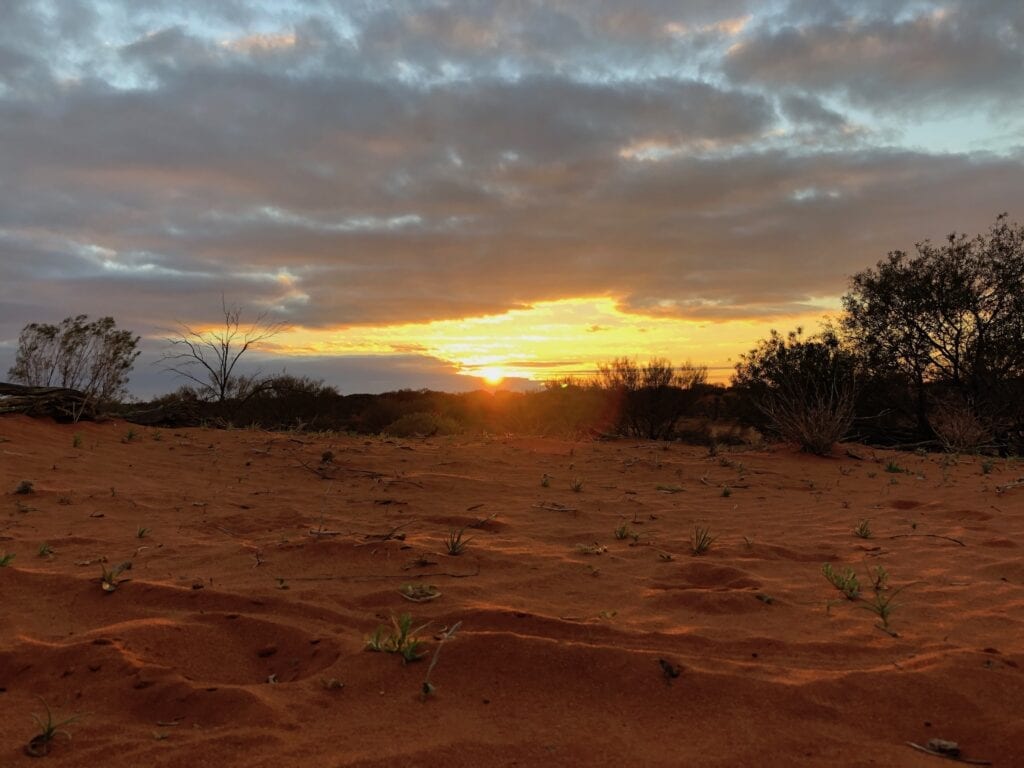
But it’s essential to prepare for the worst, just in case. Things can go wrong in the blink of an eye. When you’re travelling solo, you need to be fully prepared for any eventuality. Something as simple as two flat tyres can leave you stranded in a life-threatening situation if you’re not prepared.
When you’re travelling remote, you need a Plan B.
Hoping for the best, preparing for the worst is a pretty good start! Get the second part right and the first part will follow.
We’ve been travelling into remote places for many years now. So what are the things we do to prepare? Let’s run through the basics.
Clean Drinking Water
The first thing you need to consider is water. My biggest fear is being caught on the side of the road in 45+ degree heat (that’s Celsius!) without enough water. You can die within hours without water, on a hot day.
We use about 15 litres of water per day between the two of us. That’s everything… drinking, cooking, washing.
We have a 90 litre water tank in our Wedgetail Camper, then another 160 litres in secondary tanks under the truck’s tray. These tanks are split into two separate tanks.
There’s three reasons why the secondary tanks are split into two separate units:
- They fitted best in the space we had available.
- If one tank gets a hole in it, we won’t lose all our back-up water.
- If we accidentally contaminate one of the tanks, then we still have 80 litres available. That’s plenty to get us out of trouble.
Our secondary tanks are our Plan B. And splitting these tanks into two separate compartments is our Plan C. Without water, you’ll die.
One important consideration is keeping the water clean and free of bacteria. We use BioMagic WaterPure, which is a drinking water purifier. You add a tiny amount of this liquid to your water tanks to kill any nasty bugs.
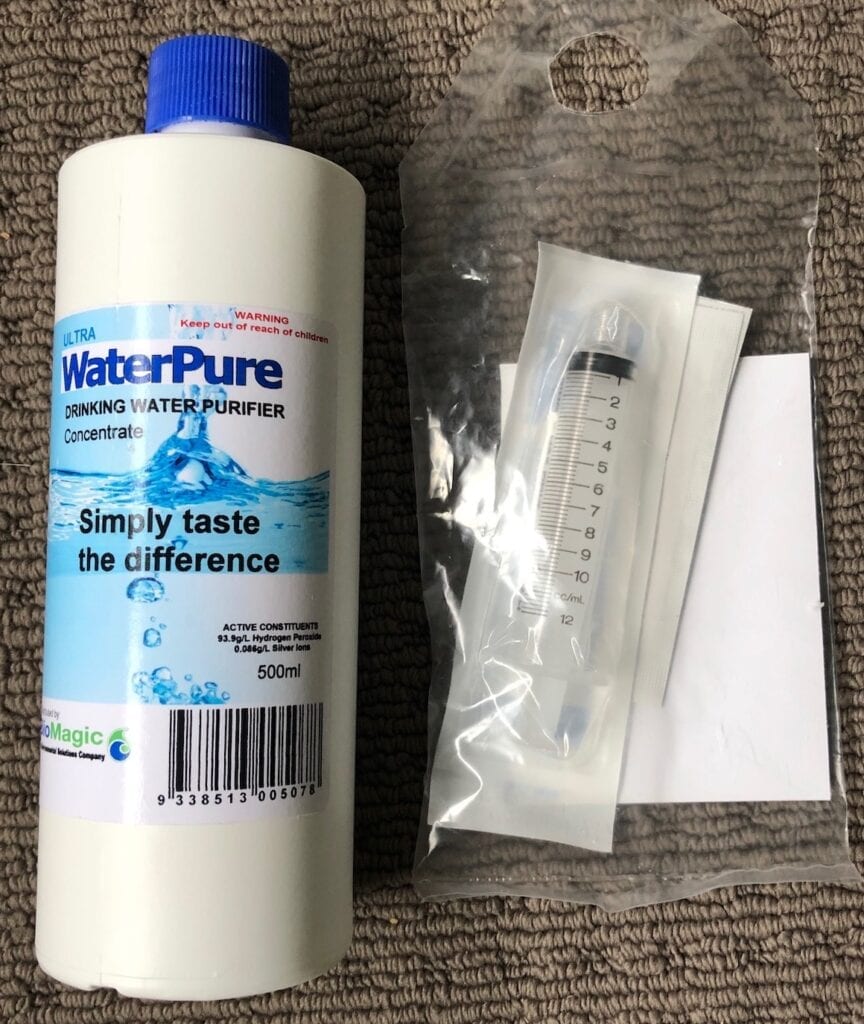
500ml of WaterPure will treat 1,250 litres of poor quality untreated water, 2,500 litres of good quality unfiltered water (town water) and 5,000 of carbon filtered water.
We use WaterPure after every tank fill. It’s cheap insurance against getting sick from water-borne contaminants. The best thing about WaterPure is that it keeps the water sanitised for up to 12 months.
So if you don’t use your water tank for a while, you know the water is still safe to drink.
When we’re filling from a tap, we always use an inline carbon filter. Our carbon filter takes out any sediment and sanitises the water on the way in to the tank. Always fit the carbon filter at the tap end of the hose. This way, your hose will stay clean and free of contaminants.
But what if you only have access to horrible-tasting bore water?
Well, you can put up with the taste. Or do what we do… buy water from a supermarket. For the sake of a few dollars, we’d much rather pay for water that tastes good than have a horrible taste in our water for months to come.
No matter how we fill our tanks, we always make sure our water tanks are full before going remote. And we top them up whenever we get the chance.
In case you’re wondering, we’ll look at how to find water in the bush and how to sterilise contaminated water another time.
Something to Eat
The other obvious essential is food. Like water, we always stock up before we go remote. We tend to eat a lot of stir fries, fried rice and pasta dishes, and use lots of veggies instead of meat. There’s two benefits.
First, you don’t have to worry about meat going off and secondly, with these dishes you’ll generally get a few dinners out of one cook-up.
We do buy meat, but use it early in the trip. And if we’re in a place with a camp kitchen, we do a big cook-up before we leave and store it in the bottom of the fridge.
We also have a “just in case” box, stored away in our truck. In this we have UHT milk and tins of soup, baked beans, dehydrated camping dinners and so on.
These are our emergency rations in case we break down or get stuck. We could easily live off these rations for a week or more.
Preparing Our Vehicle
Our truck has two fuel tanks, not connected to each other. So if we get a hole or contaminated fuel in one tank, we have a second tank to get us out of trouble.
We top up our fuel tanks wherever we can, and don’t worry too much about fuel prices.
You need fuel, so don’t decide the fuel’s too expensive and wait until the next place. It’s quite possible the next place might not have any fuel left, once you get into remote places.
We carry spare fuel filters and fuel hose, and we know how to bleed the fuel system. Learn how to do jobs like this. They can get you out of some awkward situations.
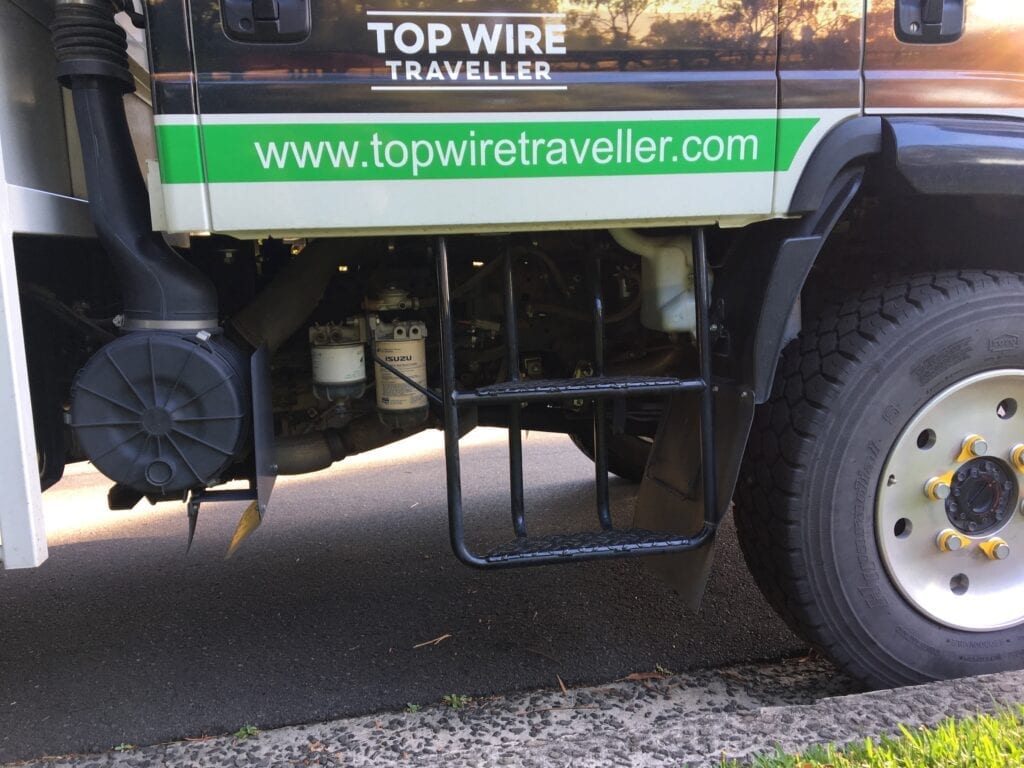
A spare air filter and a set of belts are other essential spares you should carry. We also carry tools, two-part epoxy for emergency repairs to holes in metal and plastic (like fuel tanks, water tanks, radiator or the sump), plus electrical bits and pieces like fuses, spare cable and joiners.
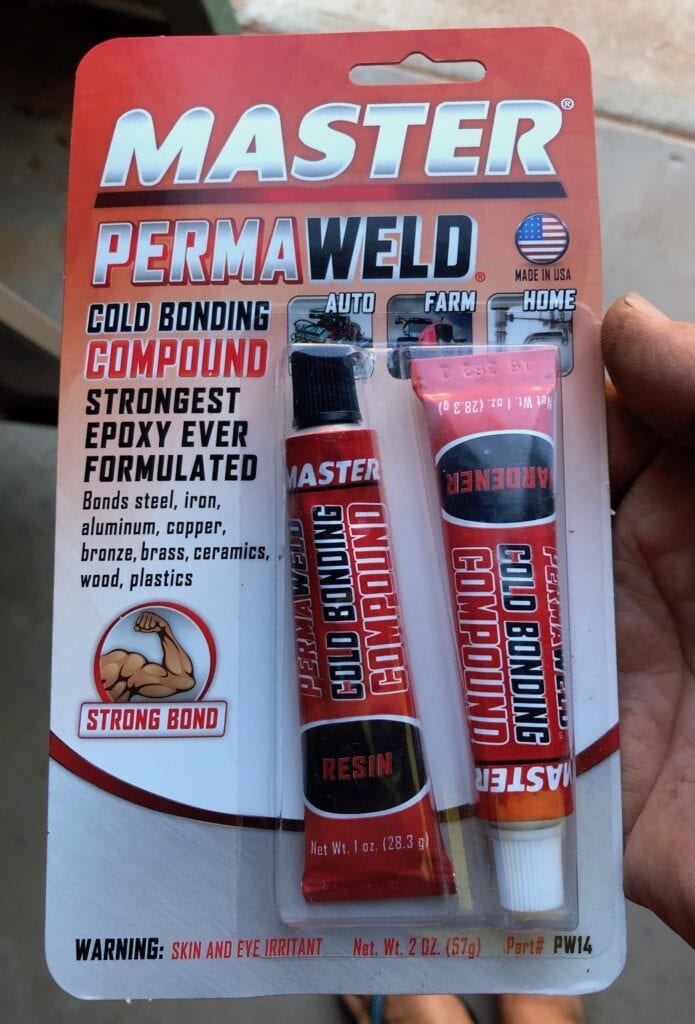
The other essentials are duct tape, cable ties, hose clamps and thermoplastic tape that bonds to itself and forms a super-strong wrap. These can be used for all sorts of emergency repairs. If you spilt a water hose for example, you’ll be able to get yourself out of trouble.
Speaking of split water hoses, this is another reason why we keep all our water tanks topped up. Make sure you have enough water onboard to at least top up the engine cooling system.
The other thing we need to think about is what happens if one of our starting batteries dies (we have two batteries because the truck is a 24 volt system). Corrugations and constant vibrations can easily break the internal plates in your battery. We carry two jump starter packs (one for each battery) to get us out of trouble.
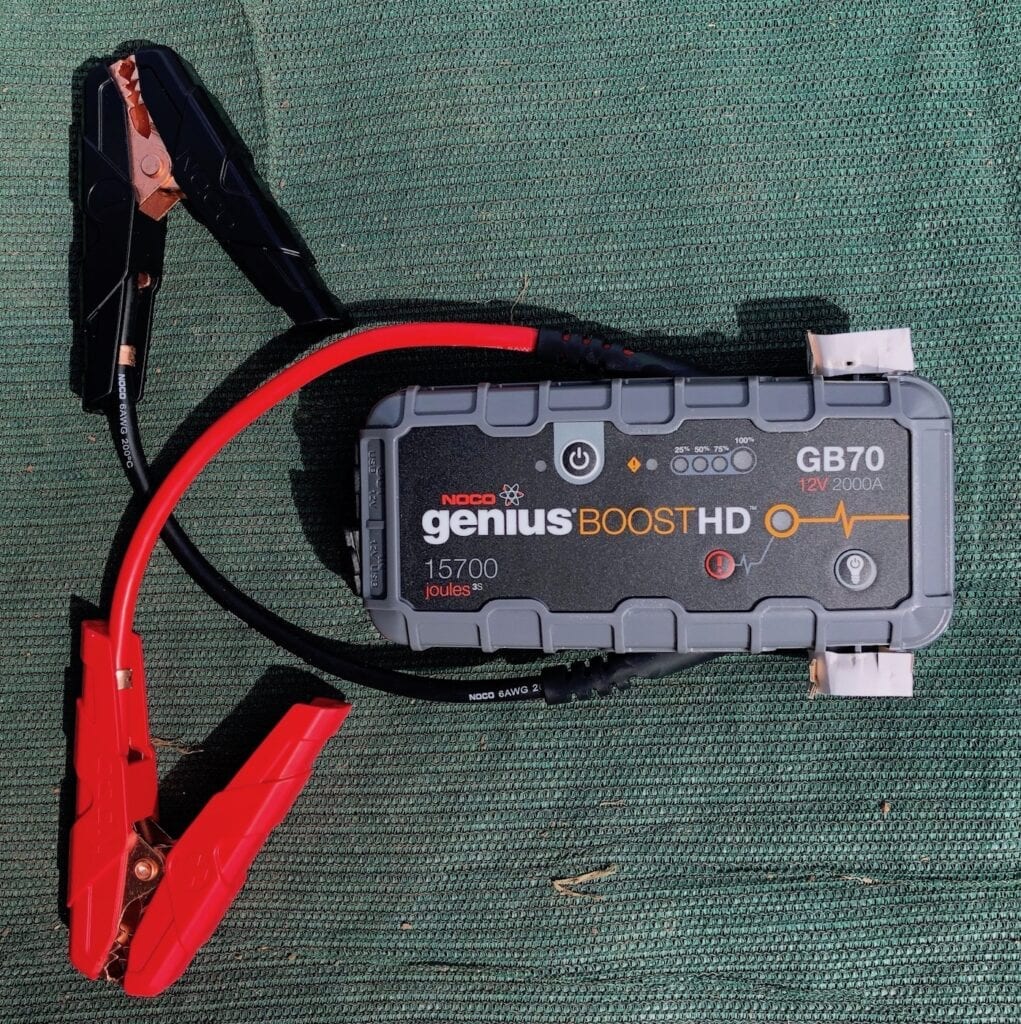
We’ve used the jump starter packs when our batteries suddenly died. And we have used them many times to help other people start their vehicles.
Take a basic toolkit… spanners, screwdrivers, pliers and a container with various sizes of nuts and bolts. This last one has saved our skin many times.
Take two spare tyres and a puncture repair kit… and learn how to use it. Make sure your tyres are in good condition before you go remote.
If you’ve fitted larger tyres (like 33s for example), make sure your jack still goes high enough. Many people have been caught out by this one.
We always check over the truck thoroughly before going remote. This is just a visual inspection to make sure everything looks okay.
Then every afternoon when we’re travelling, we do the same thing. This is a simple way to pick up any damage before it becomes a major problem.
Medical Emergencies
Carry a well-stocked first aid kit and know how to use it! Minor injuries like sprains, burns and cuts can quickly get out of hand when you’re a long way from help.
We all naturally focus on life-threatening situations like snake bites, heart attacks or happening upon a car accident. And that’s fine. However the most likely scenario is a cut, minor burn or insect bite becoming infected. Know how to clean the wound thoroughly and how to keep it clean.
Do a first aid course and learn how to treat a snake bite, heart attack or other life-threatening event.
Emergency Contacts
We used to carry a SPOT Personal Locator Beacon (PLB). If you press the SOS button, it automatically triggers a search and rescue by emergency services. Only ever use this for life-threatening situations or you’ll be charged for the full cost of the search and rescue. Ouch!
The SPOT allows you to send three other messages by SMS and email, which we’ve covered off here. Here they are again quickly:
- We’re okay.
- Need mechanical help, not urgent.
- Need medical help, not urgent.
We now carry an Iridium Extreme satellite phone. The SPOT is great, but a satellite phone is even more useful. It enables us to call a mechanic for example, and explain exactly what the cause of a breakdown is.
The other basic thing we do is notify a reliable friend or family member when we’re going remote. We tell them roughly where we’re going and how long we’ll be. Then when we’re back in mobile phone reception, we let them know we’ve made it!
Alternatively, if you had a SPOT you’d simply send a “We’re okay” message from it. And of course if you had a sat phone, you’d give them a quick call.
Security On The Road
We go into details here in “Security On The Road – A Traveller’s Guide”. In this, we describe a whole range of scenarios you might encounter. From travelling alone to situations where you need to be careful.
Suffice to say, personal security really isn’t a big issue when you’re remote. Commonsense goes a long way when you’re thinking about personal security.
Other Useful Items
Here’s a random list of some other things we find useful… items that can help when you’re preparing for the worst.
A Tarpaulin
A tarp is probably the most important piece of equipment you can carry, second only to a good supply of water. Shelter and protection from the elements is vital if you’re stranded.
Exposure to extreme heat or extreme cold quickly saps your energy, especially if someone’s injured. Use a tarpaulin to give protection from wind, heat, cold and rain.
We carry a fairly large tarp, a good quality waterproof one with one side shiny silver. It has lots of possible uses:
- Additional protection from the sun, wind or rain if you’re stranded. You can throw it over your camper or even your vehicle to keep some of the heat out.
- If the worst happens and you’ve hit the SOS button on your SPOT, lay the tarp out shiny side up so you have a better chance of being seen from the air.
- If you get really desperate, you can burn parts of it to create black smoke more easily seen by rescue aircraft.
- If your vehicle breaks down, it’ll most likely be in the worst possible location… in mud, on rocky ground, in sandy desert country full of killer burrs. So you can use the tarp as a groundsheet.
- If you have a major breakdown and need to work on your vehicle, you can use the tarp to protect yourself from the hot sun or driving rain.
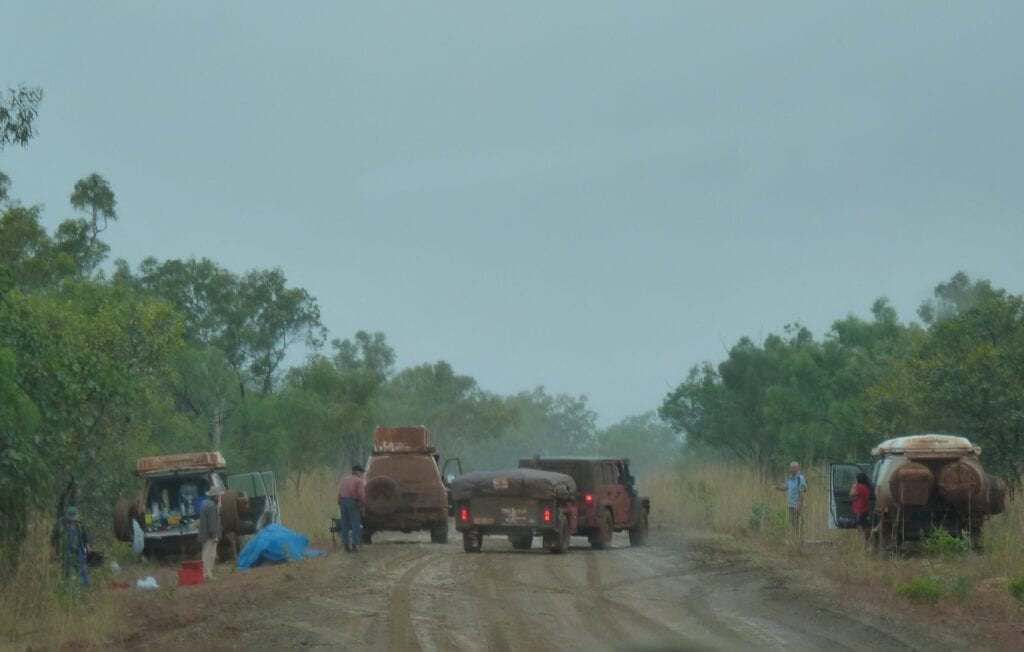
Something to Light the Fire
Take a few boxes of matches and half a dozen lighters. They have a habit of disappearing (like socks!), so always have spares.
Apart from lighting campfires, a box of matches can be a life-saver. How so? Say the worst happens and rescue services are out looking for you. One way to make sure you’re visible, is to burn green timber. It’ll smoke badly, easily seen from the air.
What if there’s no timber?
Burn plastic or rubber. Your tarp, a mudflap, a car seat cover, windscreen sunshade… anything plastic or rubber. It will put up a plume of thick black smoke, easily seen from the air.
Use your commonsense of course. Don’t light a fire and start a bushfire. That wouldn’t be a real smart thing to do!
Fire Extinguisher and Fire Blanket
While we’re on the subject of fire, carry at least one fire extinguisher and fire blanket. We actually carry 3 fire extinguishers and a fire blanket. Make sure everyone knows how to use them and where they’re stored.
Remote travel tends to involve campfires and gas cooking in the open, so the chances of needing an extinguisher are higher than normal. You could also be facing a vehicle fire.
Whatever the case, you need instant access to your extinguisher. Have it somewhere accessible to everyone, not hidden behind a pile of camping gear.
Ratchet Straps and Occy Straps
Ratchet straps are like cable ties and duct tape… you can fix anything with a ratchet strap!
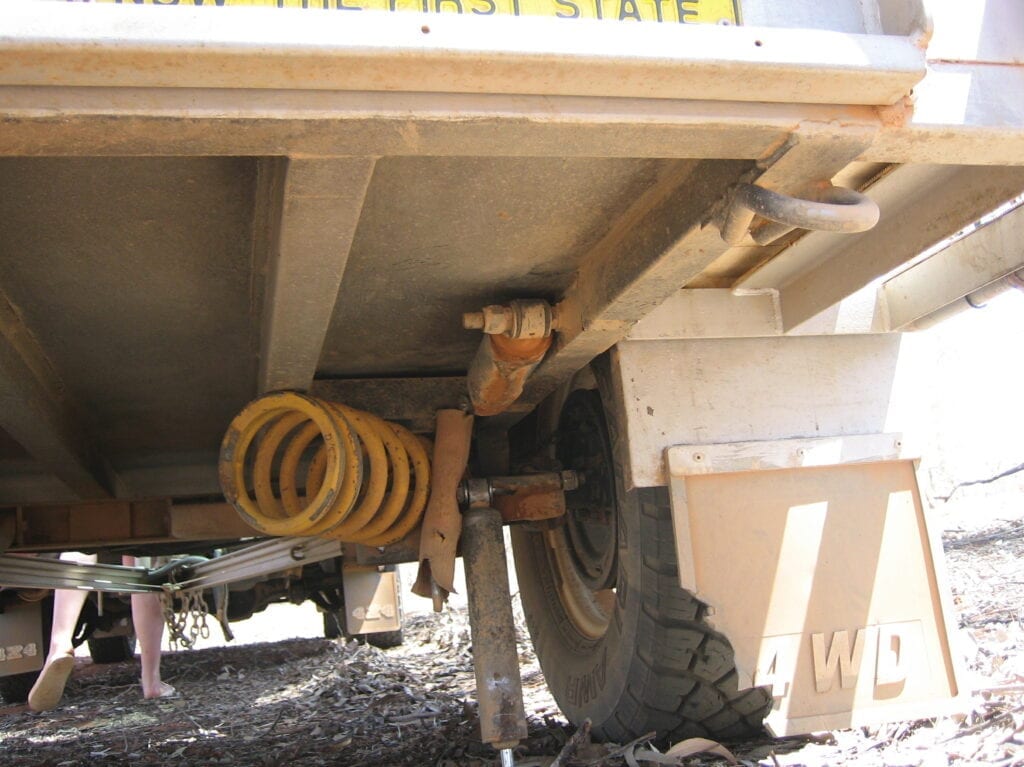
From broken trailer suspension to broken latches, a ratchet strap will get you out of trouble. We encountered a family with two blown tyres in western Queensland. So we loaded the tyres on top of the truck, ratchet-strapped them on and took them over 200km to Blackall to be replaced. Couldn’t have done that without ratchet straps…
Carry half a dozen or so good quality ratchet straps. They have a myriad of uses. And while you’re at it, get a selection of different length occy straps. They are almost as useful as ratchet straps, cable ties and duct tape!
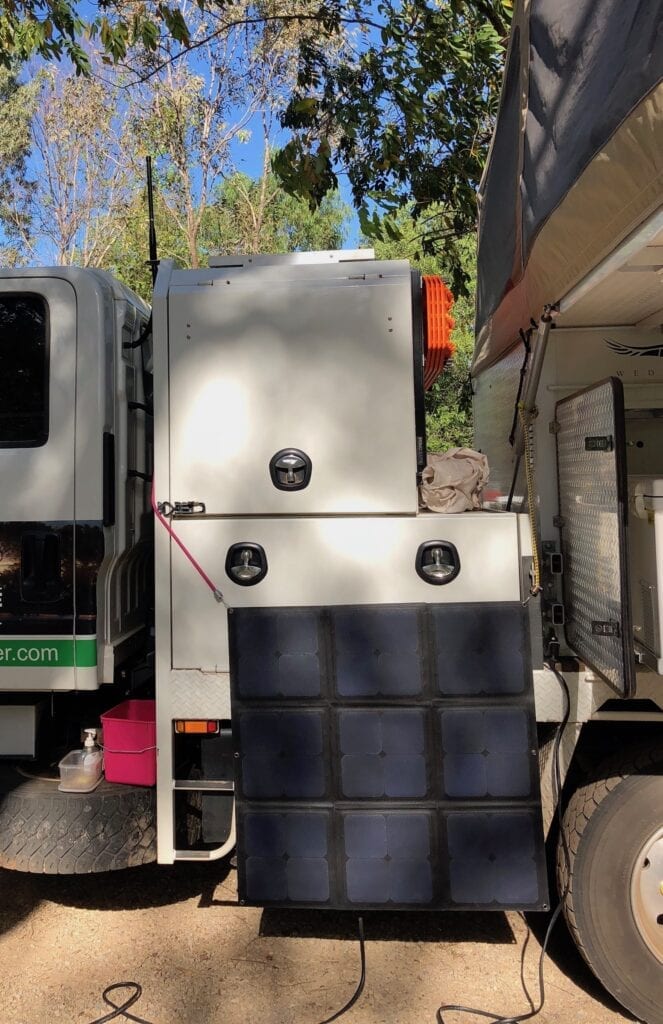
Axe and Spade
Like ratchet straps, an axe and a spade have multiple uses.
Quite obviously, axes can be used to chop up firewood. No surprises there! Less obviously though, use the back of the axe as a small sledgehammer.
You might bend something solid and need to “persuade” it back into shape. Say you’ve hit something and bent the front guard panel onto a front wheel. To get you going again, you could use the back of the axe to bend the damaged panel out of harms’ way. It won’t be pretty, but you might just get yourself mobile again.
Small incidents like this become major issues when you’re a long way from help. Add heat and vehicle damage, and suddenly you’re in a whole world of trouble. You all the help you can get.
Keep your axe sharp with a file and cover the blade so it doesn’t get chipped or damaged.
Spades have multiple uses… digging a hole for number twos, digging a trench around your tent in heavy rain, digging yourself out of a bog, making a small firepit, even using it to get the foil-wrapped spuds out of the fire when they’re ready. Yum!
A spade can be your best friend when you’re badly bogged.
Maxtrax
We also carry 4 Maxtrax recovery tracks, just in case. In combination with a spade and winch front and back, we can recover ourselves from all but the worst situations.
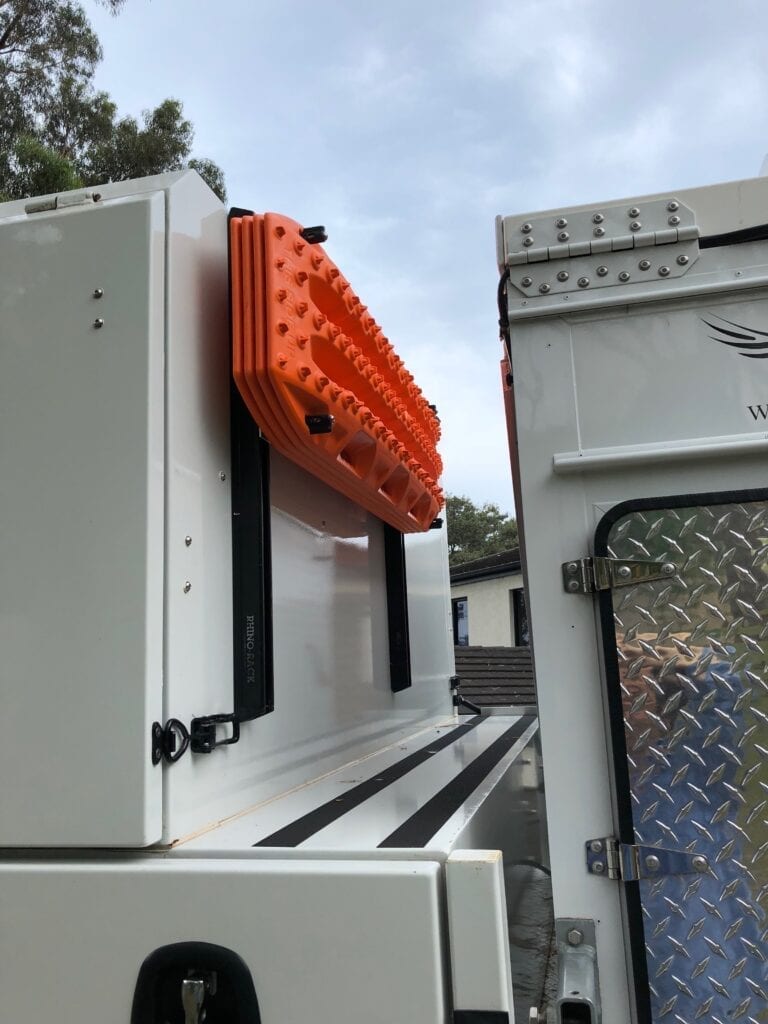
If we’re hopelessly stranded and it becomes life-threatening, then we have the satellite phone as a last resort.
Winch
I said earlier we have winches front and back. I’m pleased to say we’ve never needed them. However, they are good insurance if we get into a really bad situation.
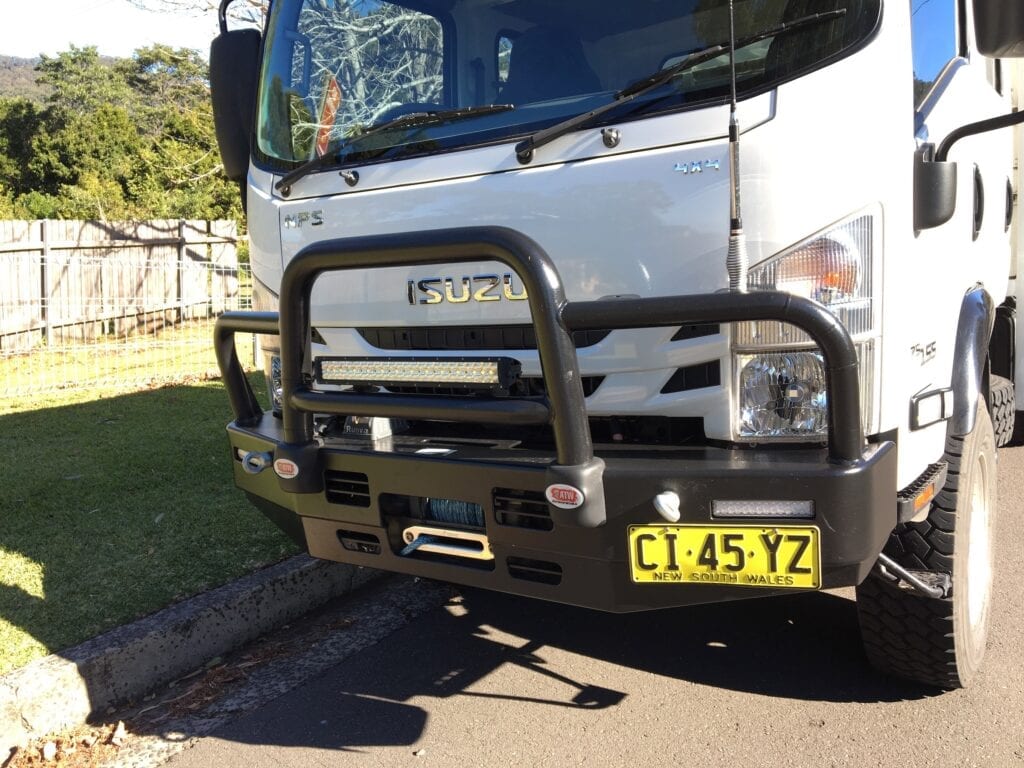
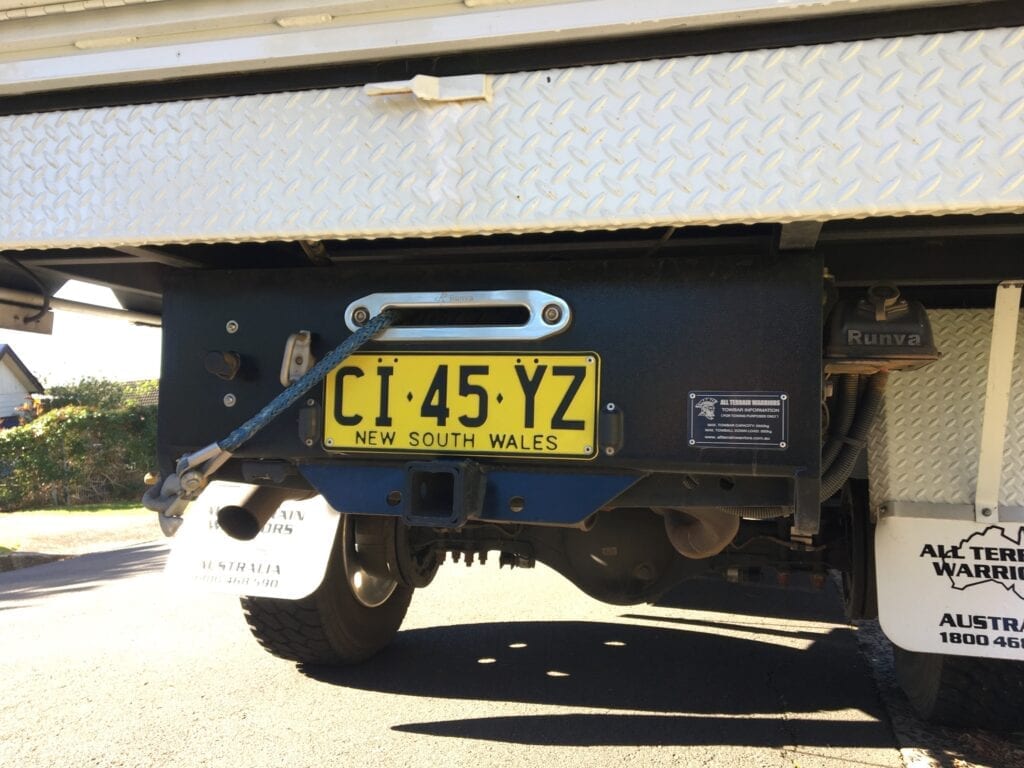
Make sure you have the right recovery gear to suit the weight of your vehicle. There’s no point having a winch if your recovery gear isn’t strong enough. Plus it’s downright dangerous.
The forces involved in winching are scary. You certainly don’t want a broken shackle flying through the air like a giant bullet. People have been killed and seriously injured from failed recovery gear.
Commonsense
Last but certainly not least, preparing for the worst involves commonsense… especially when you’re travelling alone.
Don’t put yourself in danger. Maybe you’re not sure about that deepwater crossing, whether you’ll get all the way up that steep track, if you’ll make it through the soft sand.
If in doubt, turn around.
Far better to turn back than end up hopelessly bogged, or on your roof in the middle of nowhere.
In Summary
You might be thinking some of these preparations we make and gear we have don’t really fit into the category of preparing for the worst.
I disagree.
Everything we’ve listed above has at least one function. And every one of them either prevents you from injury, assists you when you are injured or helps your rig to remain mobile.
Every one of them is a Plan B.
If you’re travelling alone without another vehicle, you really do need the ability to get yourself out of trouble. Simple issues can quickly escalate when you’re hundreds of kilometres from help. It might sound melodramatic, but it’s true.
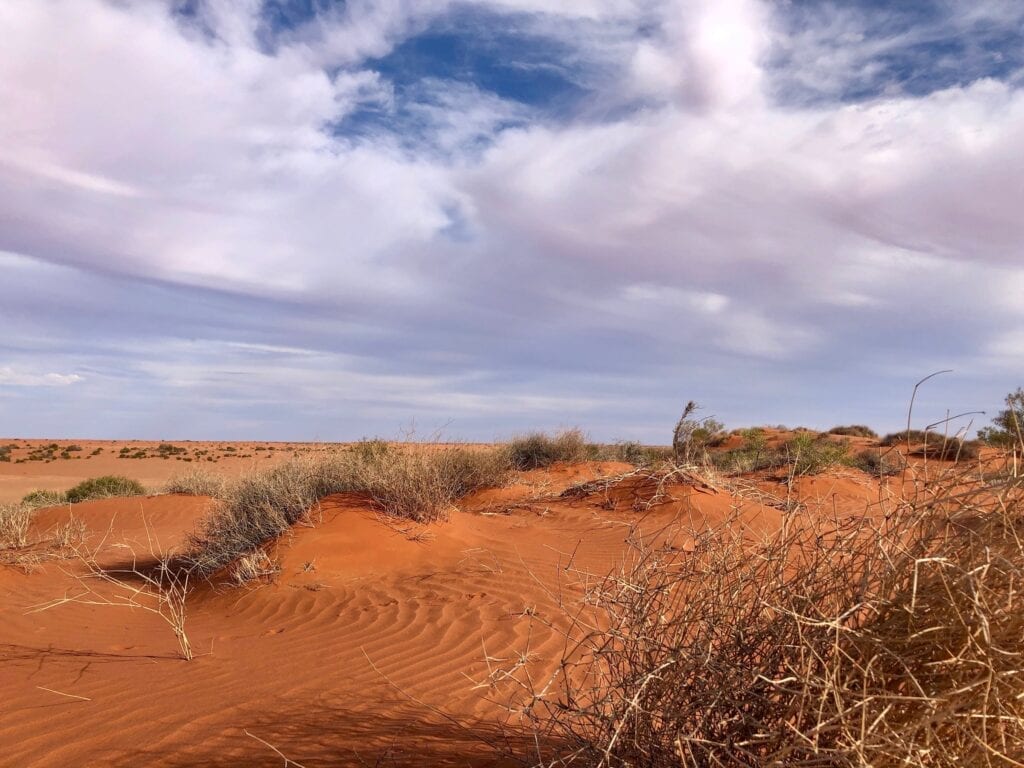
Don’t put yourself in that situation. Be prepared for the worst and know you can enjoy your trip in safety.
Most of all, relax and enjoy your yourself!
For more tips and ideas on Outback Safety and Survival, go here.
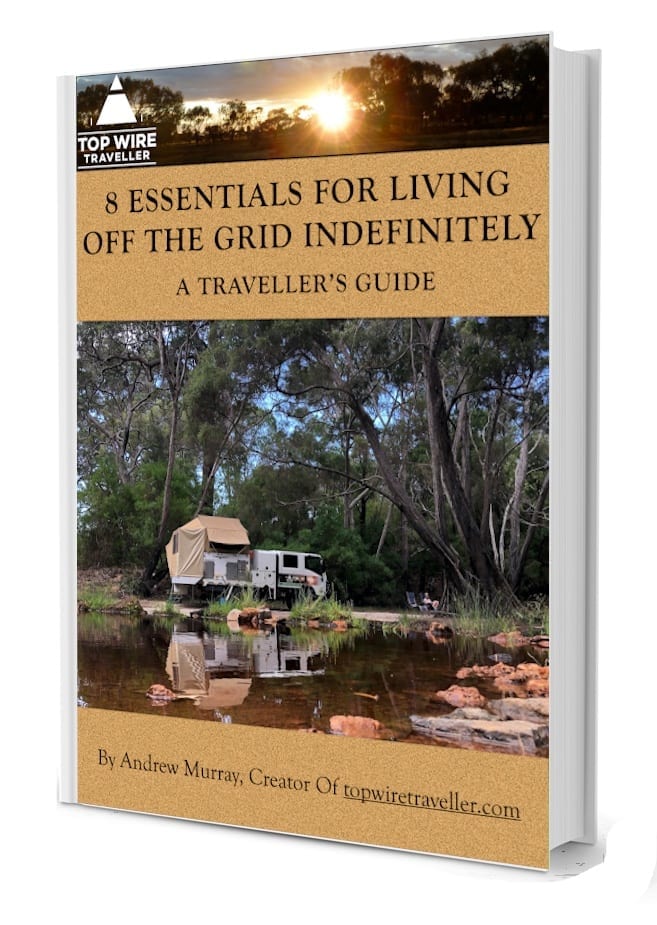
Free Download:
The 8 Essentials You Need To Live Off-Grid
…and don’t worry, eating raw fish isn’t one of them!
Any questions or comments? Go to the Comments below or join us on Pinterest, Facebook or YouTube.
Any errors or omissions are mine alone.

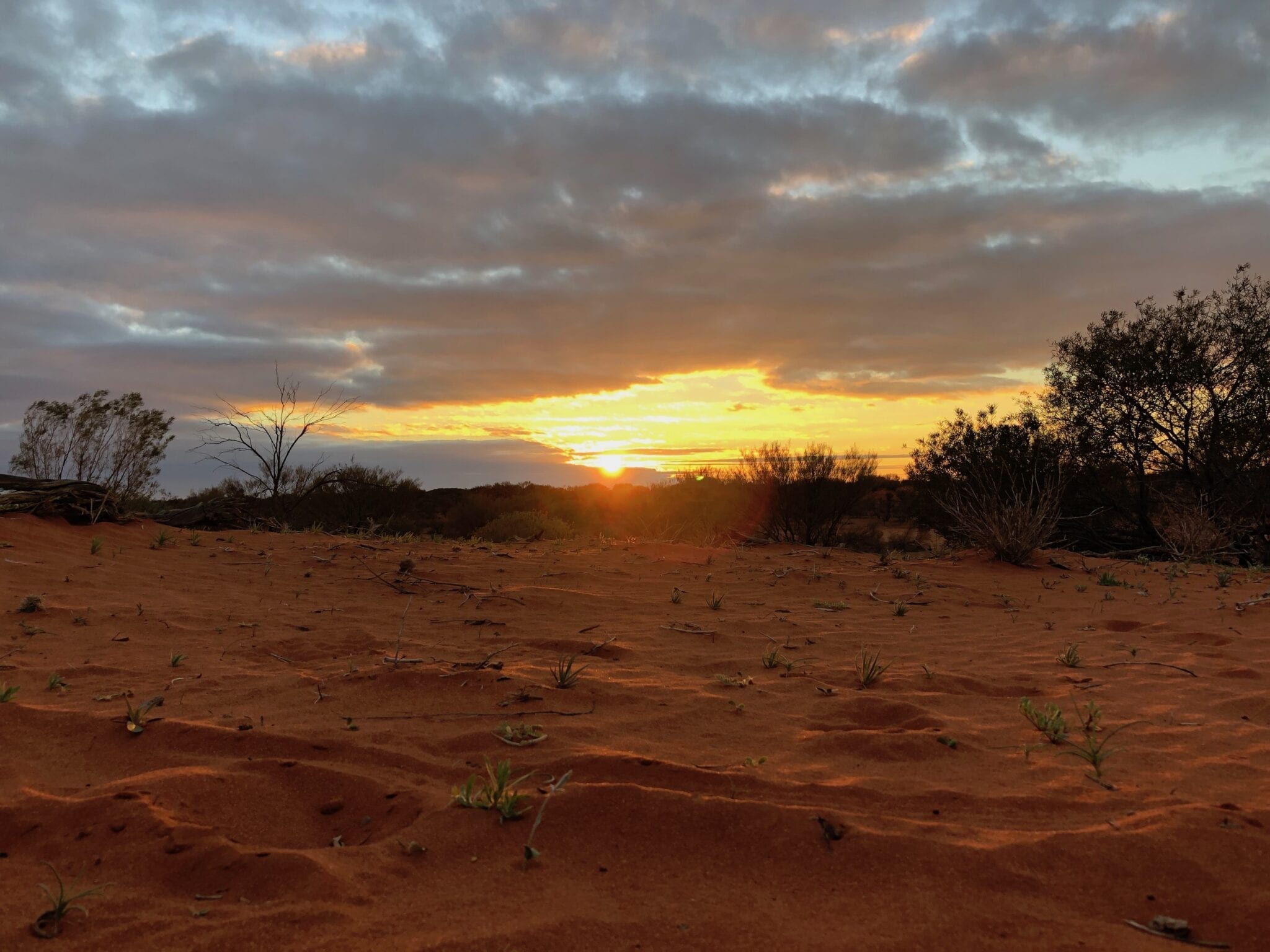
Hi! I just wanted to ask if you ever have any problems with hackers?
My last blog (wordpress) was hacked and I ended up
losing many months of hard work due to no
data backup. Do you have any methods to protect against hackers?
Hi Kristie,
I think every website has problems with hackers!
Start by seeing what protections your host offers. Many hosts have highly effective website security packages and firewalls available. They’ll also offer a range of backup options.
Cheers, Andrew